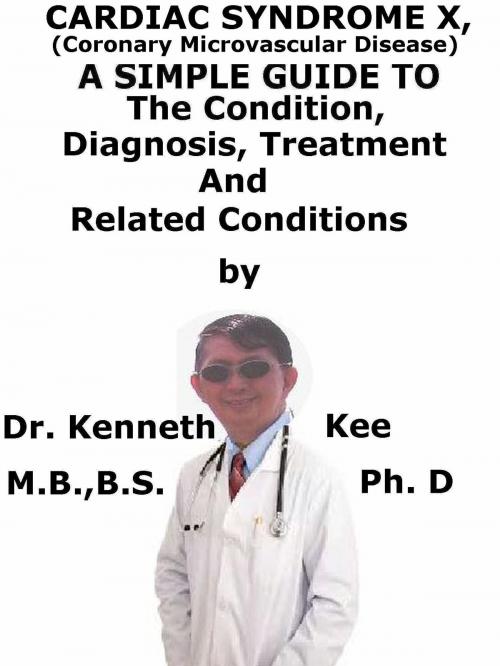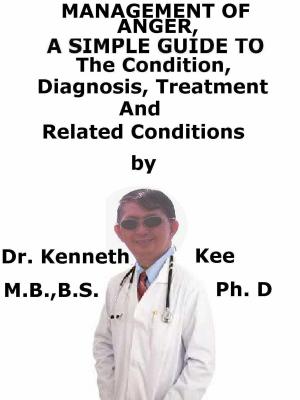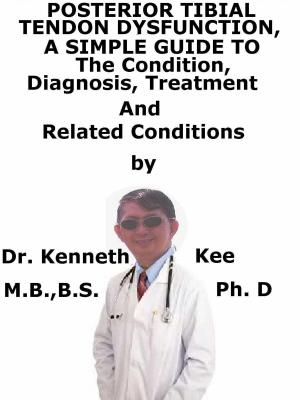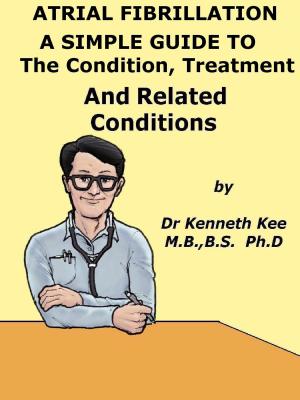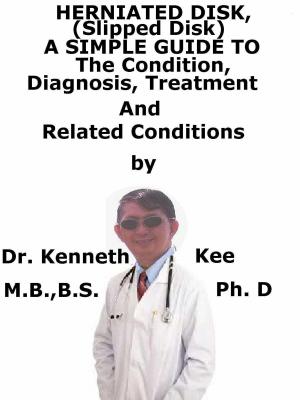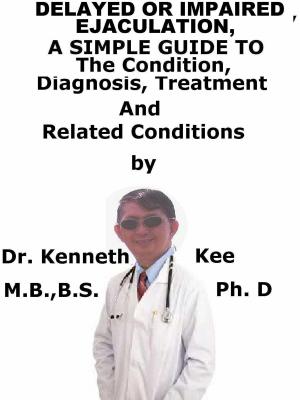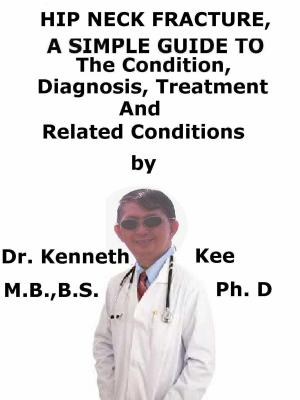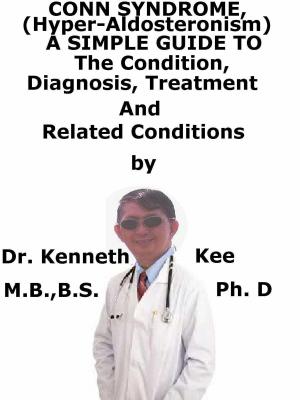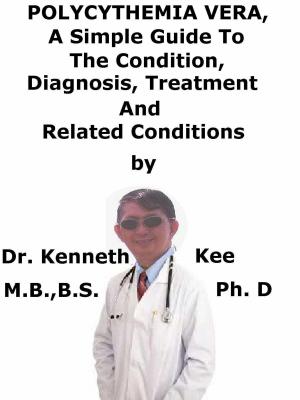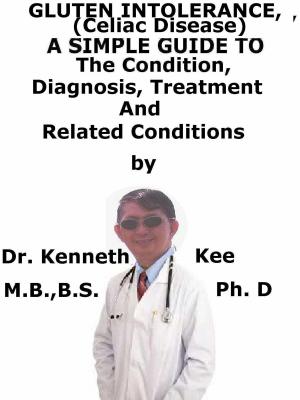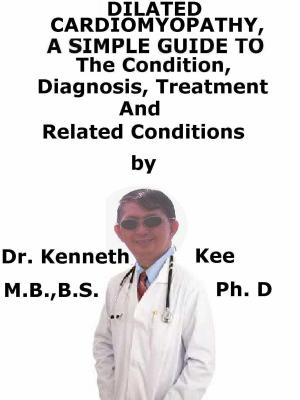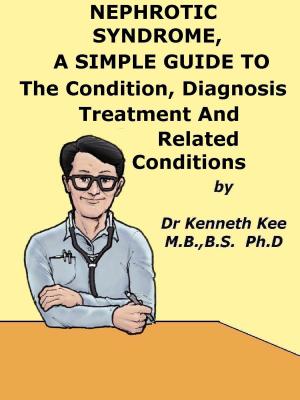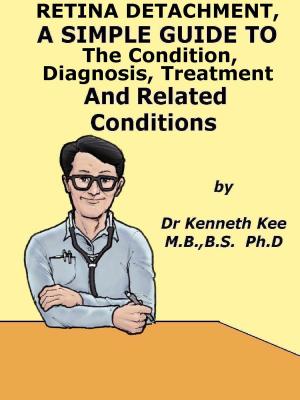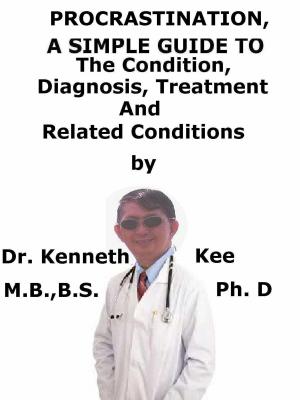Cardiac Syndrome X, (Coronary Microvascular Disease) A Simple Guide To The Condition, Diagnosis, Treatment And Related Conditions
Nonfiction, Health & Well Being, Medical, Specialties, Internal Medicine, Cardiology, Health, Ailments & Diseases, Heart| Author: | Kenneth Kee | ISBN: | 9781370183920 |
| Publisher: | Kenneth Kee | Publication: | April 6, 2018 |
| Imprint: | Smashwords Edition | Language: | English |
| Author: | Kenneth Kee |
| ISBN: | 9781370183920 |
| Publisher: | Kenneth Kee |
| Publication: | April 6, 2018 |
| Imprint: | Smashwords Edition |
| Language: | English |
This book describes Cardiac Syndrome X, Diagnosis and Treatment and Related Diseases
Cardiac syndrome X (also called Coronary micro-vascular disease or Small vessel disease) is angina (chest pain) with signs linked with reduced blood flow to heart tissue but with normal coronary arteries.
It is a heart disease that involves the walls and inner lining of tiny coronary artery blood vessels that branch off from the larger coronary arteries.
Coronary heart disease (CHD), also called coronary artery disease, affects plaque formation that can obstruct blood flow.
In cardiac syndrome X, the heart's tiny coronary artery blood vessels do not have plaque, but injury to the inner walls of the blood vessels that can result in spasms and reduce blood flow to the heart muscle.
Cardiac syndrome X is occasionally termed ‘micro-vascular angina' when there are signs of micro-vascular dysfunction
Evidence has found higher risk of other vasospastic disorders in cardiac syndrome X patients, such as migraine and Raynaud's syndrome.
It is treated with beta-blockers, such as metoprolol, and normally has a favorable prognosis.
This is a distinct diagnosis from Prinzmetal's angina (spasm in the coronary arteries).
Women more often develop cardiac syndrome X and it happens mostly in younger women.
The men and women, who have cardiac syndrome X often have diabetes, pressure or a family history of cardiomyopathy.
Normal tests used to diagnose coronary heart disease are not planned to detect cardiac syndrome X
Causes
The same risk factors that produce atherosclerosis may cause cardiac syndrome X.
Atherosclerosis is a blood vessel disease in which plaque forms inside the arteries.
Risk factors for atherosclerosis are:
1.Unhealthy blood cholesterol levels
2.High blood pressure
3.Smoking
4.Diabetes
5.Overweight and obesity
Women may be at danger for cardiac syndrome X if they have less than normal estrogen levels at any point in their adult lives.
Low estrogen levels before menopause can increase younger women's risk for cardiac syndrome X and can be because of stress and also a functioning disorder with the ovaries.
Women who have high blood pressure before menopause, particularly high systolic blood pressure, are at higher risk for cardiac syndrome X.
After menopause, women are likely to have more of the usual risk factors for atherosclerosis, which also places them at higher risk for cardiac syndrome X.
Symptoms:
1.Angina: This normally does not cause dysfunction on echocardiogram and the exercise-induced chest discomfort can last longer than that of heart disease.
2.Abnormal cardiac stress test: The ECG ST changes are normally same as those of coronary artery disease
3.Coronary angiogram: normal
Diagnosis
Cardiac syndrome X is a diagnosis of exclusion of other heart disorders.
Normally this will require both a medical diagnosis, proper stress testing, and a coronary angiogram
The doctor may advise tests for heart disease, such as:
1.Coronary angiography
2.Stress test
3.Magnetic Resonance Imaging (MRI)
Treatment
The first step in treating cardiac syndrome X is the administration of nitrates which alleviate the chest pain.
They are given because of their capability to relax the muscles of the heart and blood vessels.
They prove to be inefficient in as many as 50% of patients.
Alternative treatments may be the use of calcium channel blockers or beta blockers which decrease chest pain by relaxing the muscle cells lining the artery and increasing blood flow to the heart while reducing blood pressure.
Aminophylline may work by inhibiting adenosine receptors.
Estrogen may be effective in women
Medicine help prevent blood clots
Ranolazine is shown to improve angina
TABLE OF CONTENT
Introduction
Chapter 1 Cardiac Syndrome X
Chapter 2 Causes
Chapter 3 Symptoms
Chapter 4 Diagnosis
Chapter 5 Treatment
Chapter 6 Prognosis
Chapter 7 Coronary Heart Disease
Chapter 8 Cardiac Arrest
Epilogue
This book describes Cardiac Syndrome X, Diagnosis and Treatment and Related Diseases
Cardiac syndrome X (also called Coronary micro-vascular disease or Small vessel disease) is angina (chest pain) with signs linked with reduced blood flow to heart tissue but with normal coronary arteries.
It is a heart disease that involves the walls and inner lining of tiny coronary artery blood vessels that branch off from the larger coronary arteries.
Coronary heart disease (CHD), also called coronary artery disease, affects plaque formation that can obstruct blood flow.
In cardiac syndrome X, the heart's tiny coronary artery blood vessels do not have plaque, but injury to the inner walls of the blood vessels that can result in spasms and reduce blood flow to the heart muscle.
Cardiac syndrome X is occasionally termed ‘micro-vascular angina' when there are signs of micro-vascular dysfunction
Evidence has found higher risk of other vasospastic disorders in cardiac syndrome X patients, such as migraine and Raynaud's syndrome.
It is treated with beta-blockers, such as metoprolol, and normally has a favorable prognosis.
This is a distinct diagnosis from Prinzmetal's angina (spasm in the coronary arteries).
Women more often develop cardiac syndrome X and it happens mostly in younger women.
The men and women, who have cardiac syndrome X often have diabetes, pressure or a family history of cardiomyopathy.
Normal tests used to diagnose coronary heart disease are not planned to detect cardiac syndrome X
Causes
The same risk factors that produce atherosclerosis may cause cardiac syndrome X.
Atherosclerosis is a blood vessel disease in which plaque forms inside the arteries.
Risk factors for atherosclerosis are:
1.Unhealthy blood cholesterol levels
2.High blood pressure
3.Smoking
4.Diabetes
5.Overweight and obesity
Women may be at danger for cardiac syndrome X if they have less than normal estrogen levels at any point in their adult lives.
Low estrogen levels before menopause can increase younger women's risk for cardiac syndrome X and can be because of stress and also a functioning disorder with the ovaries.
Women who have high blood pressure before menopause, particularly high systolic blood pressure, are at higher risk for cardiac syndrome X.
After menopause, women are likely to have more of the usual risk factors for atherosclerosis, which also places them at higher risk for cardiac syndrome X.
Symptoms:
1.Angina: This normally does not cause dysfunction on echocardiogram and the exercise-induced chest discomfort can last longer than that of heart disease.
2.Abnormal cardiac stress test: The ECG ST changes are normally same as those of coronary artery disease
3.Coronary angiogram: normal
Diagnosis
Cardiac syndrome X is a diagnosis of exclusion of other heart disorders.
Normally this will require both a medical diagnosis, proper stress testing, and a coronary angiogram
The doctor may advise tests for heart disease, such as:
1.Coronary angiography
2.Stress test
3.Magnetic Resonance Imaging (MRI)
Treatment
The first step in treating cardiac syndrome X is the administration of nitrates which alleviate the chest pain.
They are given because of their capability to relax the muscles of the heart and blood vessels.
They prove to be inefficient in as many as 50% of patients.
Alternative treatments may be the use of calcium channel blockers or beta blockers which decrease chest pain by relaxing the muscle cells lining the artery and increasing blood flow to the heart while reducing blood pressure.
Aminophylline may work by inhibiting adenosine receptors.
Estrogen may be effective in women
Medicine help prevent blood clots
Ranolazine is shown to improve angina
TABLE OF CONTENT
Introduction
Chapter 1 Cardiac Syndrome X
Chapter 2 Causes
Chapter 3 Symptoms
Chapter 4 Diagnosis
Chapter 5 Treatment
Chapter 6 Prognosis
Chapter 7 Coronary Heart Disease
Chapter 8 Cardiac Arrest
Epilogue
